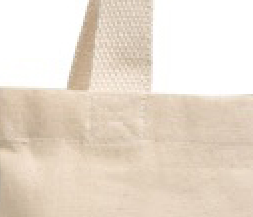Eco Bags for UK Why Reusable is the Future
Posted on June 6, 2019 at 3:30 PM

The pressure for your business to go green is huge, and only getting bigger. Whether it’s reusable shopping bags for the weekly trolley dash or reducing the amount of stuff we chuck out to end up in landfill, it’s clear that an eco-lifestyle is essential.
We’ve already examined green shopping, and how we still need to do more to reduce plastic consumption, even with the UK’s bag tax on plastic carriers. But there’s more to eco bags, than simply using an eco-friendly jute bag instead of a plastic patch handle.
Today we’re looking beyond the confines of a Bag for Life to examine at the definition of an eco-bag and the materials that we can use, as well as killing off some of the myths around products that claim to be “eco-friendly”.
Everything you do, own, or use has a carbon footprint – the amount of carbon dioxide released into the atmosphere in its manufacture or use.
So, to be truly “eco-friendly”, the longevity (or reusability) of a product must outweigh the environmental impact of its manufacture and delivery to the consumer.
Using plastic bags as an example, their creation alone involves the collection of raw materials, manufacture and distribution. When you consider their actual life span – measured in hundreds if not thousands of years – they are the very opposite of “eco-friendly”.
A study by finance info site Market Watch calculated how many times an eco-friendly reusable bag had to be re-used to beat the disposable alternatives and found that even with the increased manufacturing process required it took just 100 cycles for them to be “better for the environment”.
So, if being environmentally-friendly is important to your brand values – and it should be – you must look at the potential longevity of the product you are supplying – even if it’s just the tote bag in which your customers carry off your actual products.
And if you’re using bags as a giveaway simply to promote your brand, perhaps at a conference or event, there’s even more reason to make sure they’re “green”.
As well as longevity, there’s also biodegradability. Petro-chemical plastic bags are certainly not biodegradable. An alarming number of printed carriers end up in landfill, in hedgerows, fields, beaches and even rivers, seas and oceans, shredding down and eventually becoming micro-plastics that lodge in the guts of birds and wildlife and sealife. Recently, a plastic bag was even found at the bottom of the deepest ocean on the planet.
We all owe it to our children and grandchildren – and every other creature on the planet – to eliminate plastic from our lives, and some consumers are already trying to live a life without plastics at all. If your company uses plastic, consumers like them will cease to be customers before long.
The decision process
The bottom line with longevity of promotional merchandise is build quality. It doesn’t matter how pretty the print on your gift bag, if its handles aren’t strong enough, or the cotton is too thin, it won’t last and will end up in a tip somewhere, along with the masses of plastic carrier bags, defeating the object entirely.
In choosing the right tote you need to look at the following aspects; material weight (thickness), seams and handles. All three of these boxes must be ticked to ensure you’re supplying a potential eco branded bag.
For example, an increasingly common choice for merchandising your brand is promotional jute bags. Jute is a natural material of high strength and durability, with the added benefit that it is completely biodegradable at end of life. Eco jute bags are seen more and more as part of the groceries shop, or as a tote for school or business, where they act as a constant reminder of your business brand.
On BagsofIdeas.co.uk we’ve created a zoom function on each of our products so you can see how each bag is made, but here we’re going to give an example of what you should be looking for as regards the handles. This cotton bag has a folded seam on the top, into which the handles are sewn, not only around the edges, but also through the middle in an X shape, ensuring durability and longevity.

As for the bag’s seams, unless there’s a gusset, ensure the bag is only sewn at the sides (not the bottom). A bag is only sewn along the sides, there’s no seam at the bottom because it’s one piece of cotton or canvas folded. This makes the bag stronger. As a rule of thumb, the fewer sewn seams the better. For gusseted bags, make sure the seams are strong.
